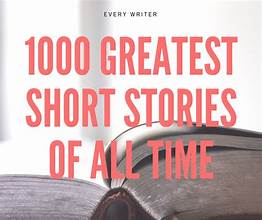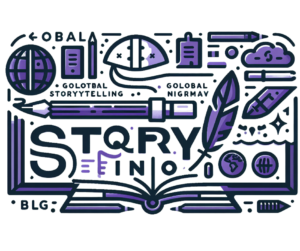
Short stories have always held a special place in literature, offering a compact yet profound experience for readers. These brief narratives pack an emotional punch and encapsulate complex themes, leaving an indelible mark on literary culture. In this article, we delve into some of the most influential short stories of all time, examining their impact and why they remain timeless classics.
1. “The Lottery” by Shirley Jackson
First published in 1948, Shirley Jackson’s “The Lottery” is a powerful and unsettling short story that critiques societal norms and conformity. The narrative is set in a small town where an annual lottery results in a shocking and brutal conclusion. Jackson’s use of a seemingly ordinary setting to unveil a horrific tradition serves as a commentary on the dangers of blind adherence to tradition and collective violence. Its unexpected twist and the exploration of human nature make it a seminal work in the genre of psychological horror.
2. “The Tell-Tale Heart” by Edgar Allan Poe
Edgar Allan Poe’s “The Tell-Tale Heart,” written in 1843, is a quintessential example of Gothic literature and early psychological horror. The story is narrated by an unreliable protagonist who insists on their sanity while recounting the murder they committed. Poe’s masterful use of suspense, unreliable narration, and the theme of guilt manifesting as a heartbeat beneath the floorboards solidify this tale’s status as a classic. Its exploration of the human psyche and madness has influenced countless writers and remains a staple in discussions of horror fiction.
3. “A Good Man is Hard to Find” by Flannery O’Connor
Flannery O’Connor’s 1953 short story, “A Good Man is Hard to Find,” is a poignant exploration of morality, redemption, and human frailty. Set in the American South, the story follows a family whose road trip takes a tragic turn when they encounter an escaped convict known as The Misfit. O’Connor’s narrative blends dark humor with Southern Gothic elements, creating a compelling and thought-provoking piece. The story’s themes of grace and redemption, alongside its vivid characterization, have cemented its place as a critical work in American literature.
4. “The Gift of the Magi” by O. Henry
O. Henry’s “The Gift of the Magi,” first published in 1905, is a heartwarming tale of love and sacrifice. The story revolves around a young couple who, despite their financial struggles, each make a significant personal sacrifice to buy a Christmas gift for the other. The irony and emotional depth of the narrative underscore the themes of selflessness and devotion. O. Henry’s masterful use of twist endings and exploration of the complexities of love have made this story a beloved classic.
5. “Harrison Bergeron” by Kurt Vonnegut
Kurt Vonnegut’s “Harrison Bergeron,” published in 1961, is a dystopian short story that satirizes the concept of absolute equality. Set in a future where the government enforces physical and mental handicaps to ensure everyone is equal, the story follows a rebellious character, Harrison Bergeron, who defies these constraints. Vonnegut’s exploration of individualism, government control, and the cost of enforced equality raises critical questions about freedom and human nature. Its thought-provoking narrative and satirical edge continue to resonate with readers today.
6. “The Yellow Wallpaper” by Charlotte Perkins Gilman
Charlotte Perkins Gilman’s “The Yellow Wallpaper,” written in 1892, is a seminal work in feminist literature and psychological fiction. The story, presented as a series of journal entries, depicts the mental deterioration of a woman undergoing a “rest cure” for postpartum depression. The yellow wallpaper in her room becomes a symbol of her oppression and mental anguish. Gilman’s exploration of gender roles, mental health, and the limitations imposed on women in the 19th century has made this story a significant piece in discussions of feminism and mental health.
7. “A Rose for Emily” by William Faulkner
William Faulkner’s “A Rose for Emily,” published in 1931, is a Southern Gothic tale that examines themes of isolation, change, and the clash between tradition and progress. The story centers on Emily Grierson, a reclusive woman in the town of Jefferson, Mississippi. Faulkner’s use of a non-linear narrative and rich, atmospheric descriptions create a haunting portrayal of Emily’s tragic life and the societal expectations that confine her. The story’s exploration of memory and the passage of time continues to captivate readers and critics alike.
8. “The Cask of Amontillado” by Edgar Allan Poe
Another of Edgar Allan Poe’s masterpieces, “The Cask of Amontillado,” published in 1846, is a dark tale of revenge and deception. The story follows Montresor, who lures his unsuspecting victim, Fortunato, into the catacombs with the promise of a rare wine. Poe’s use of dramatic irony, suspense, and vivid descriptions creates a chilling narrative about the consequences of betrayal and the human capacity for cruelty. Its exploration of the darker aspects of human nature ensures its place as a classic.
Conclusion
These timeless short stories have left an indelible mark on literature, offering readers profound insights into the human condition and societal norms. From the unsettling revelations of “The Lottery” to the poignant sacrifice in “The Gift of the Magi,” each story explores universal themes that resonate across generations. Their enduring influence is a testament to the power of the short story format to convey complex ideas and evoke deep emotional responses. Whether you are a seasoned reader or new to the genre, these classics offer a rich and rewarding literary experience.











